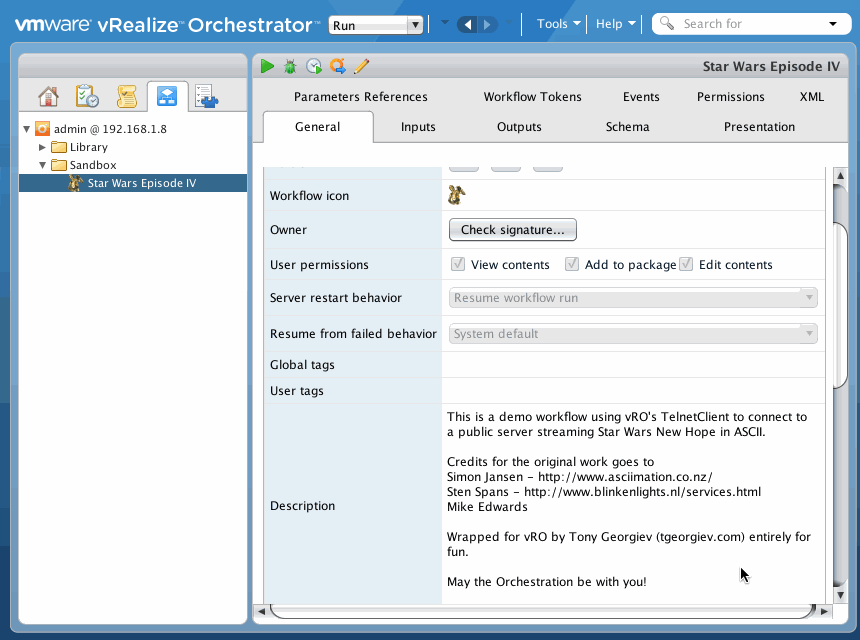Recently vRA 6.2 was released and together with that ASD got a new feature that allows you to bind the constraints and permissible values of fields in ASD forms to External Value Definitions, that are backed up by vRO scripting actions. This means that you can enhance the request form or resource details form by making fields more dynamic that calculate their state and values from scripting actions. By having all the various vRO’s plugins and especially the REST plugin, you can connect to any* 3rd party system and retrieve values from it.
To give you an example I will use this very nice post, by Cesare Rossi, that came just in time for me to write mine. You can see the post here http://www.ilvirtualista.it/2014/12/18/vrops-if-this-than-that/. His example is sweet, uses the “Send notification” workflow to create a catalog item to send emails and the IFTTT service to send text messages. I will not change anything on the functional level, but rather enhance the presentation of his request form, without touching the workflow nor it’s presentation.
Now, you may have noticed that his post is entirely in Italian. I love the Italian language, but since I know very little, I will build a catalog item that allows entering message contents in English and by using a vRO scripting action that uses Google Translate, the form will instantly translate my message in Italian. We will do it following the steps:
1. Create a scripting action in vRO that talks with the Google Translate service.
Read More



